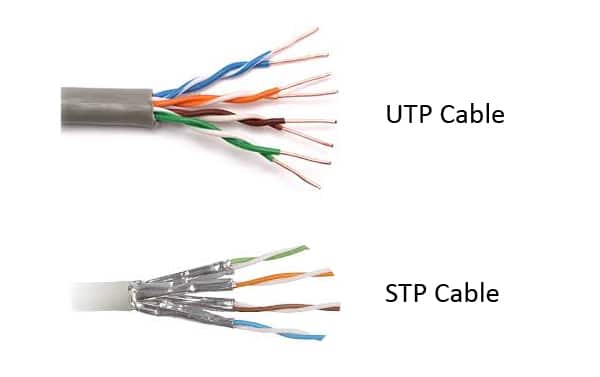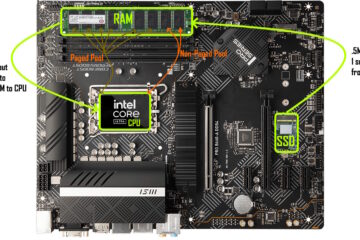In a word, Yes, Cat6 cable supports 2.5GB network transmission rates.
Cat3 vs Cat5 vs Cat5e vs Cat6 vs Cat6a vs Cat7 vs Cat8 Table
| NAME | TYPE | MAX BANDWIDTH | MAX TRANSMISSION RATE |
| CAT3 | UTP | 16 MHz | 10 Mbps |
| CAT5 | UTP | 100 MHz | 10/100 Mbps |
| CAT5e | UTP or STP | 350 MHz | 10/100/1000 Mbps |
| CAT6 | UTP or STP | 550 MHz | 10/100/1000 Mbps |
| CAT6a | UTP or STP | 550 MHz | 100/1000/250010,000 Mbps |
| CAT7 | STP | 600 MHz | 1000/2500/10,000 Mbps |
| CAT8 | STP | 2 Ghz | 40,000 Mbs |
What is the Difference between UTP and STP Cable?
UTP = Unshielded Twisted Pair = just plain copper wire with a thin plastic coating, twisted together
STP = Shielded Twisted Pair = plain copper wire with a thin plastic coating, twisted together and then wrapped in a shielding material similar to tin foil.

If a cable specification shows UTP or STP, it means the cable could be produced with or without shielding, but that likely effects the distance it can carry data or you have to be careful where you put it. For instance, UTP cable is not going to do well passing by florescent lighting or high voltage power systems or magnetic fields.
Brief History of Recent Networking Cable Standards
Category 5 (Cat5) cable was the standard for network cable from about 1995 through 2005. About 2005 CAT5 was completely supplanted by a much faster variant named CAT5E which is still a very common standard in offices and homes today.
In 2005 we had a client who was frequently moving massive files in the 100GB range and they knew they would want run faster connections in the future when the cost of 10GB network cards dropped to reasonable price, so they installed CAT6A network cable in their walls. When the bought their CAT6A, 2.5GB was not even a consideration.
Today however, that client asked us about newer middling standard, 2.5GB Ethernet, and they wanted to know if their CAT6 wall cables and CAT6 patch cables would support it.
Can I Use CAT5e Patch Cables on a CAT6 Network?
Yes, because patch cables are used point to point for example from your PC to a network switch in the wall. However there are two things to note:
- You should not mix network cable types together with female/female connectors
- The slowest cable or switch in your network will set the maximum speed of your network. For instance, if you have 2.5GB switches in your server room, connected to CAT6A cables in your walls, that then go to wiring closest on each floor that connect 2.5GB switches to your PC’s using CAT5E cable, you will get a 1GB connection.
CAT5e vs CAT6 Comparison Table
| Cat5e | Cat6 | |
| Cost | Varies by length & manufacturer, ~$0.25/Foot | Varies by length & manufacturer, ~$.40/Foot |
| Maximum Cable Length For 1Gbs | 100 Meters | 100 Meters |
| Maximum Cable Length For 2.5Gbs | n/a | 55 Meters |
| Maximum Cable Length For 10Gbs | n/a | 33-55 Meters |
| Performance | Potentially more interference than CAT6. | SNR (signal to noise ratio) higher and better |
| Standard gauges in conductors | 24-26 AWG wire | 22-24 AWG wire |
| Frequency | 100MHz Max | 500 MHz Max |
| Connectors | RJ45 (aka 8P8C) | RJ45 (aka 8P8C) |
| Common Usage | Personal home usage | Office networks, Phone Lines, Camera Lines, Home Networks |
What is CAT6A, CAT7 and CAT8?
Cat6 was very quickly replaced with a new cable standard named Cat6A which most people just refer to as Cat6.
Cat7 never caught on because it was virtually identical to Cat6e.
Cat8 is the latest standard that you can actually buy, and it can run at 40GB/s .
What Connector Does CAT6, CAT7 and CAT8 Network Cable Use?
All of these cables use the now ubiquitous RJ45 connector and all of them are backwards compatible. For example CAT7 cable can work with CAT5e.
What Does “Over Copper” Mean?
Over copper means the wire is made of copper cables as opposed to fiber optic cable, which is made of a highly flexible, but relatively fragile, glass.



1 Comment
Cathy Peters · June 29, 2024 at 9:42 am
Works for me! Cat5e Patch Cables, Cat 6 Patch Cables, Fiber Optic Patch Cables, Cat 6A Patch Cables is a lot of stuff to keep track of how it interacts